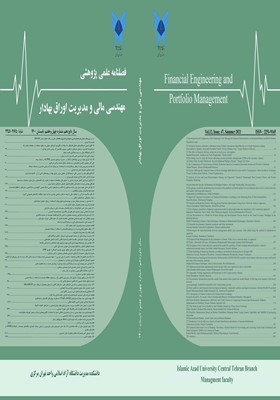The Presentation of a Model for Product Design and Development Process based on the Smart Economy Paradigm in the Banking Industry
Subject Areas : Financial engineeringmahdi soltani njad 1 , kiamars fathihafshjani 2 , gholamreza hashemzadehKhorasgani 3 , , AbouTorab Alirezaei 4
1 - Department of Industrial Management, South Tehran Branch, Islamic Azad University, Tehran, Iran
2 - Department of Industrial Management, South Tehran Branch, Islamic Azad University, Tehran, Iran.
3 - Department of Industrial Management, South Tehran Branch, Islamic Azad University, Tehran, Iran
4 - Department of Industrial Management, South Tehran Branch, Islamic Azad University, Tehran, Iran
Keywords: Banking industry, Grounded Theory, Product Design and Development Process, Smart Economy,
Abstract :
The present research aims to make a model for product design and development process (PDDP) based on the smart economy paradigm in the banking industry.The qualitative section approach is based on Grounded Theory.The data-collection instrument consists of semi-structured interview with twelve research and innovation experts and managers in banking industry applying purposeful as well as snowball sampling.Findings show that the final model consists of 6 main dimensions36 components and 236 indicators.The central category is the stages of the product design and development process in the field of banking which in six dimensions determine the goals and strategies of the PDDP ideas management,PDDP analysis, product design and processes, business development acquisition, performance management and upgrade during the product life cycle and according to causal conditions, intervening conditions, contextual conditions, strategies and results were. Among the research results is the application of smart economy strategies in the PDDP in the country's banking industry.In quantitative section,the data was collected by a researcher-made questionnaire consisting of 94 items and the descriptive-survey method was used for analysis and explanation of proposed model. The quantitative results indicate the verification of the model relations with an appropriate impact factor as well as its consistency with qualitative-section results
_||_


